
Located in Malibu, CA is the imposing Getty Villa, one of the two locations of the J. Paul Getty Museum. The Getty Villa is a museum as well as an education center dedicated to the study of the arts and cultures of the ancient Mediterranean World, dating from 6,500 B.C. to A.D. 400. To stay true to its purpose, the building has been modeled after the Villa dei Papiri, a roman country house in Herculaneum that was buried by the eruption of Mount Vesuvius in A.D. 79.
Because much of the original Villa dei Papiri remains unexcavated, the museum’s architectural and landscaping details were designed according to plans of Roman houses present in the same area. The result is an amazing building that gives a pretty accurate feeling on how people were living in these ancient times.

Overlooking the Main Courtyard of the Villa
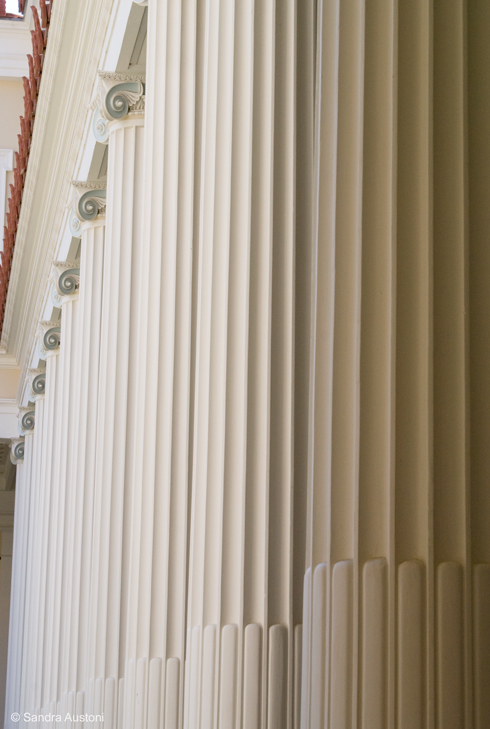
Corinthian columns
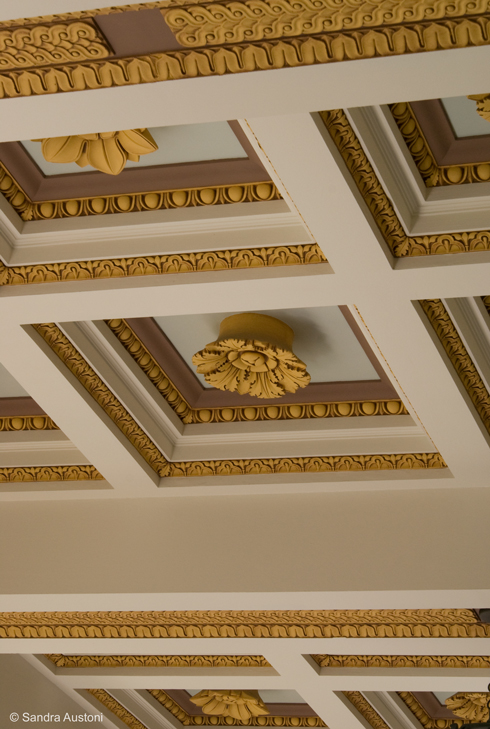
Details on the ceiling
The museum was build in the early 1970 on the same ground where the oil Tycoon J. Paul Getty had his residence. Mr. Getty wanted to re-create a first-century Roman country house, the Villa dei Papiri, to display his growing art collection of which Greek and Roman antiquities were an important element.
The J. Paul Getty Museum opened in 1974, after a detailed construction work performed by the architectural firm of Langdon and Wilson. In 1997, the site closed to undergo a complete renovation while the Getty Center opened to the public in Los Angeles. In January 2006, the newly renovated Malibu site opened as the Getty Villa, dedicated to the arts and cultures of ancient Greece, Rome and Etruria.
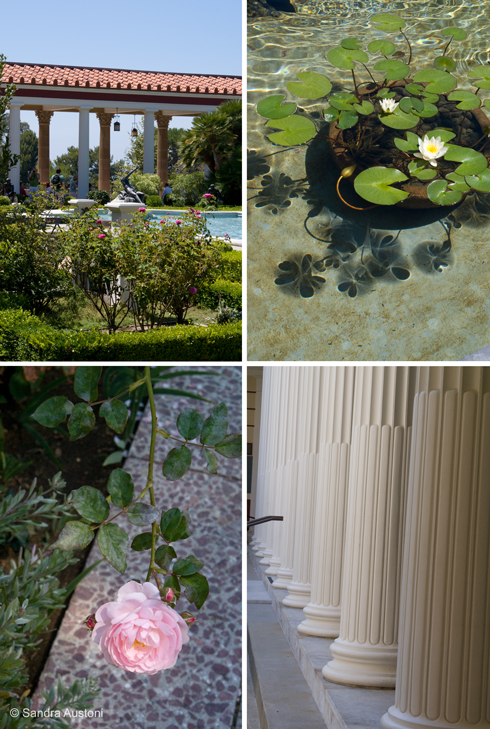
Nature and architecture blends harmoniously
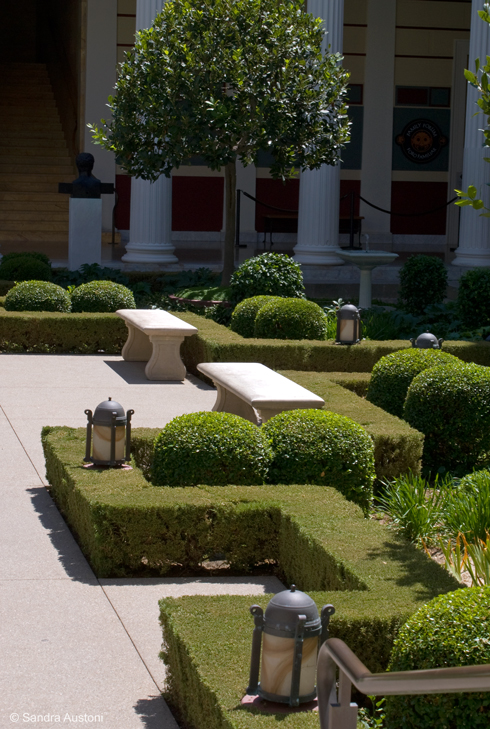
The Inner Peristyle displays many bronze status and benches
During the Roman period, these large villas were used as a way to display the wealth of its owner and were always open to the public. Neighbors and other citizens were free to come and go, and we can easily perceive the rivalry and jalousie present among the wealthier people.
Gardens are an important part of the Getty Villa. Like in every Ancient Rome home, the Villa has a fragrant herb garden that were used in cooking, ceremony and medicine. Fountains and lily ponds are also widely present on the grounds, reminding us the importance that water had during this time in history. The gardens offer many peaceful places for conversation and contemplation, away from the continual agitation of the house.
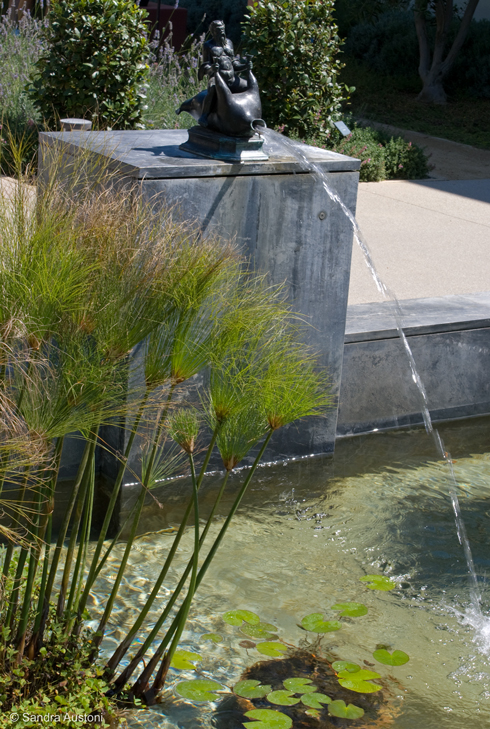
Lily pond in the Herb Garden

Lily pond in the Herb Garden
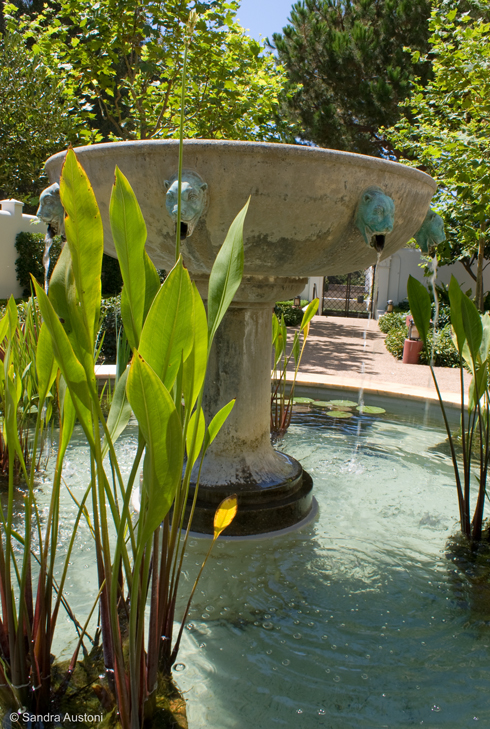
East Garden fountain
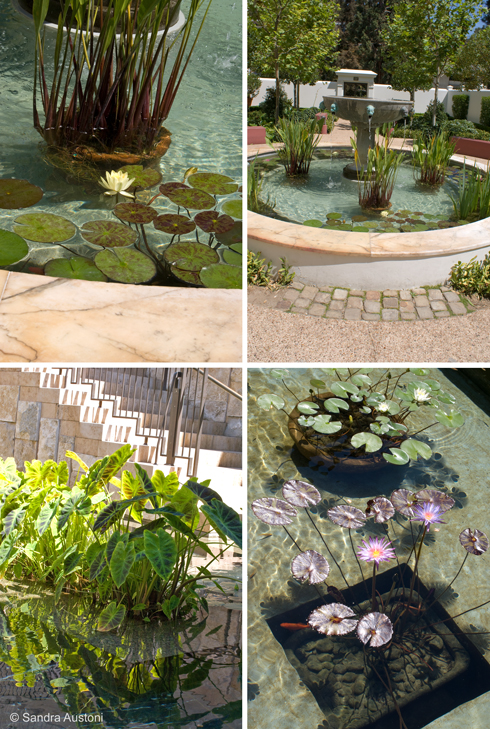
Fountains and lily pounds
The formal gardens and the long corridors of the Outer Peristyle provide interesting perspectives for any photographer. Many bronze replicas of status found at the Villa dei Papiri are displayed here in their original ancient elements.
The art and sculpture collections are housed inside the main building, around the Atrium and the Inner Peristyle. Approximately 44,000 Greek, Roman, and Etruscan antiquities are exhibited in the 23 galleries of the permanent collection. Five additional galleries are dedicated for changing exhibitions. Today, the Getty Villa is home to one of America’s finest collections of ancient Mediterranean World antiquities.
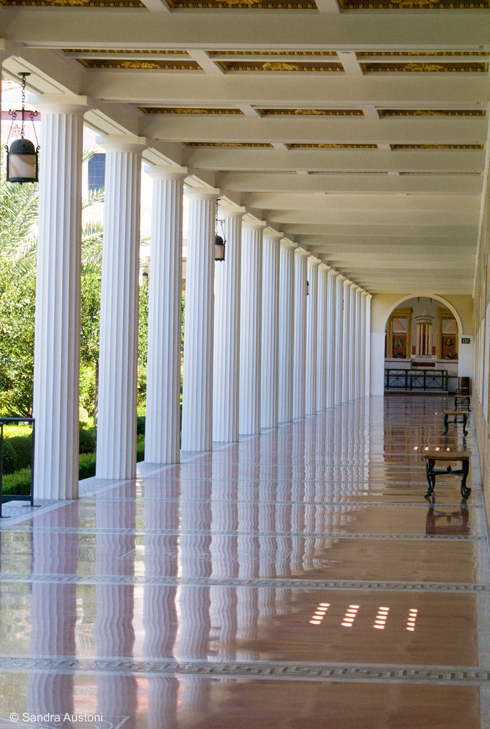
Colonnade around the Outer Peristyle
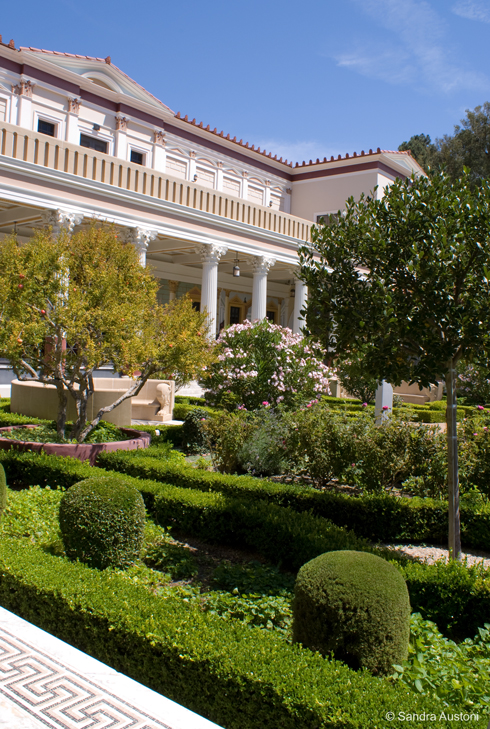
Formal gardens in the Outer Peristyle
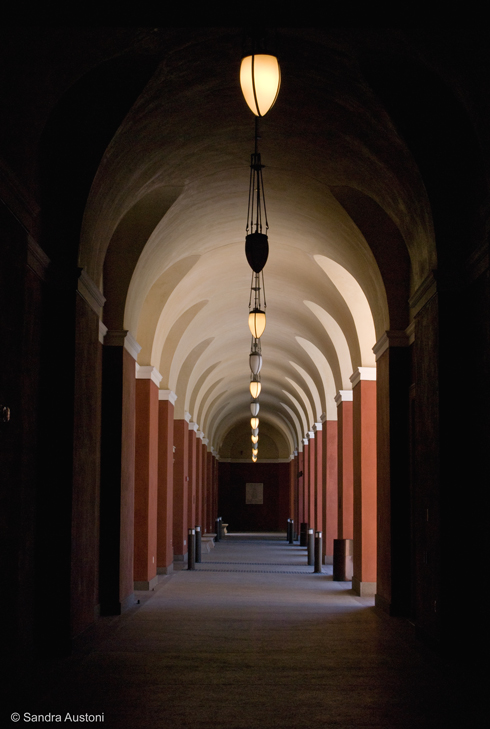
Corridors create interesting perspectives
For more information
The Getty Villa is open Wednesday to Monday, 10am – 5pm (Closed on Tuesday) and the admission is free. However, the museum is limiting the number of visitors and you would need to book your timed ticket in advance via phone or the museum website. For more information, please visit The Getty website.
Interactive map
Check out our interactive map of Southern California to see where I took all the pictures featured in this article.
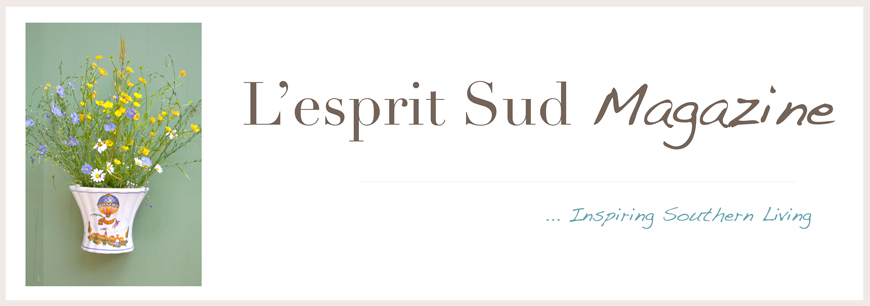
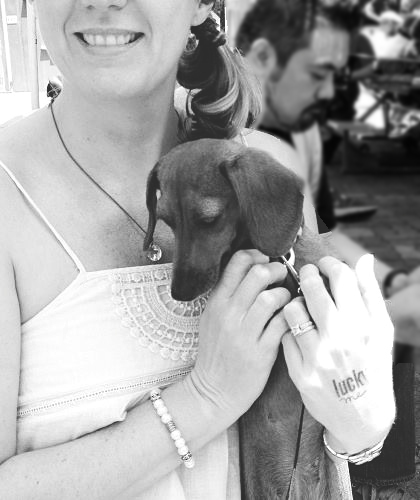

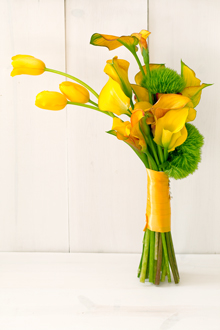

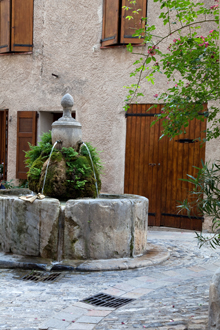

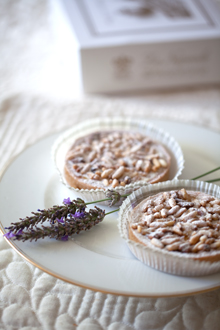

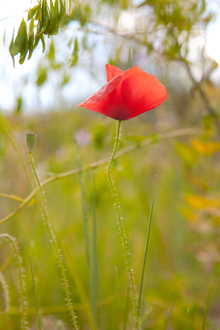

No comments:
Post a Comment
Thank you for stopping by. I will be very happy to read your comments and questions.
Sandra